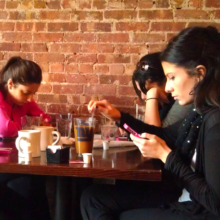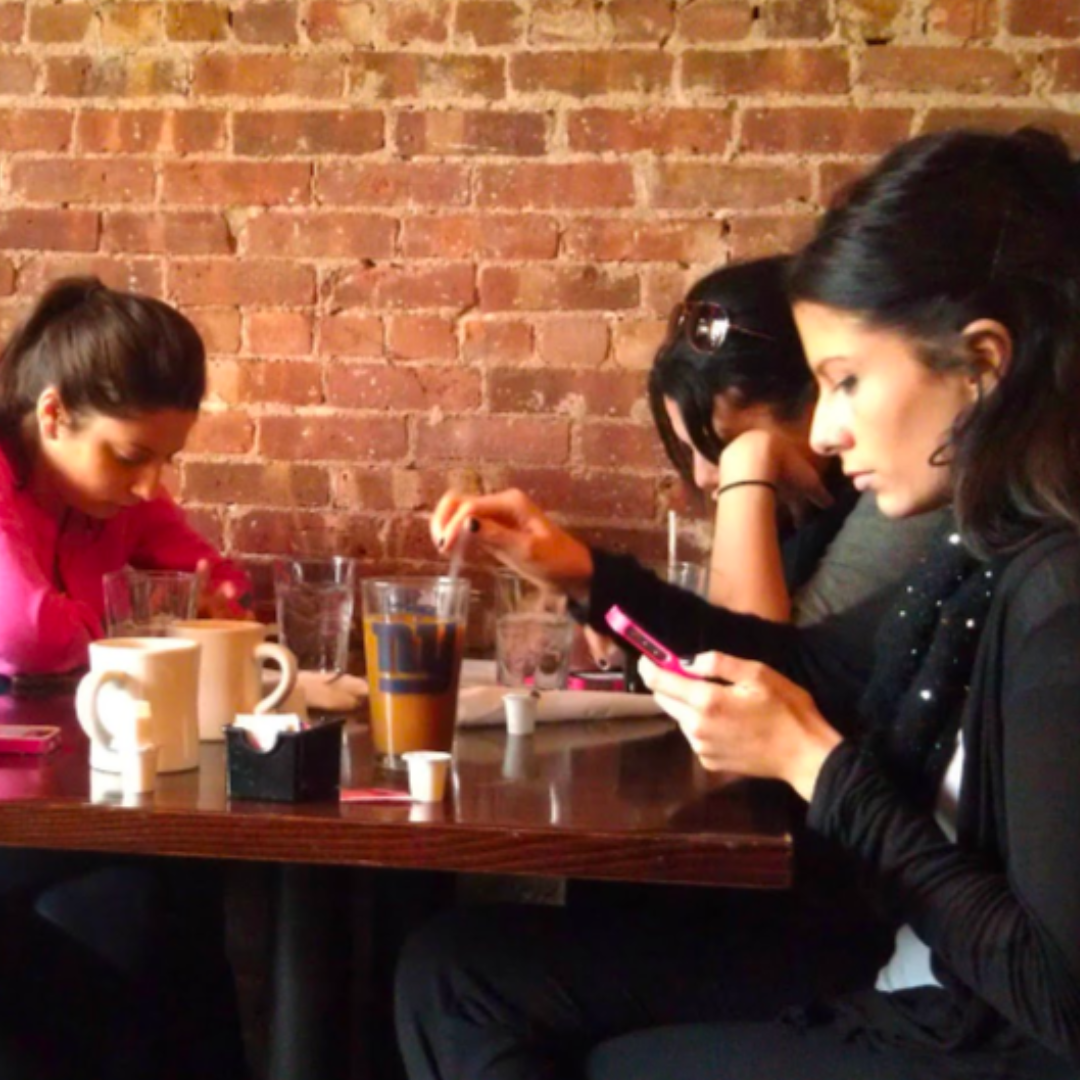
Sixteen high schoolers and I, along with the other chaperones, sat in a circle on the long wooden jetty in the shade of one of the stilt houses over the water. The wood had been worn smooth by years of ocean water and plodding bare feet, but the unevenness made an uncomfortable seat. The scene was beautiful – beach along the coast framed by tangled jungle, waves gently whispering beneath us against the barnacle-covered pilings, the islands of the archipelago glistening in the distance. The service trip had been full of incredible adventures. Digging a well 15 feet deep. Cliff diving. Beautiful boat rides. Spending the night with local families and waking up with the roosters. Laughter. Immersion in a new culture.
Now, on the last day, was the time to reflect. One by one, the students shared their highlights.
I think the best part was actually not having my phone.
Probably just being able to actually hang with you guys because I didn’t have my phone.
Same.
Yeah, just not having my phone. I was really mad at first, but it was really good to not have it.
My jaw just about fell to the uneven floor. Well over half of the group said not having their phones was the highlight of their trip. We were island hopping in rural Indonesia for a week, and that was the highlight?!
In his book The Anxious Generation, well-known NYU Social Psychologist Jonathan Haidt writes, “Gen Z became the first generation in history to go through puberty with a portal in their pockets that called them away from the people nearby and into an alternative universe that was exciting, addictive, unstable, and … unsuitable for children and adolescents.”
For years, CHA’s student cell phone policy has been that Lower and Middle School student cell phones need to be “away for the day.” But the school’s stance on phones in high school has been that we need a “bridge” to university: no phones in class, but in passing periods or lunch, it’s okay. Use in moderation.
But this coming school year, after much thought and prayer, our Away for the Day policy will apply to all grade levels at CHA. The volume of data, both anecdotal and research-driven, has become overwhelming: phones during the school day are not great for kids; limited phone use is great for kids.
Away for the Day policies are no longer rare. Now more than half of U.S. states have laws that ban or regulate cell phones in school. Our neighboring high schools, Glenbrook North and South, now have Away for the Day policies for their high school students. Teachers, our best first-hand witnesses to the impact of cell phones on learning, are massively in favor of significant limitations. Last spring our own CHA department chairs unanimously voted in support of an Away for the Day policy. This was also the sentiment of several Upper School parents who attended our Screenagers showing last spring. Such a policy is not a Luddite reaction to technology; it’s now, quite simply, best practice and common sense.
While we’ve had moderate success with our current policy of no phones in our Upper School classrooms, cell phones do take a definitive toll on our high school culture. If you’ve ever been in the Loft during lunch, the reality is that our students are, typically, buried in their phones. We want to promote social interaction, not digital distraction. Because phones are not allowed in the classroom, passing periods are often a frantic check for digital updates. We’ve had students post unwanted pictures or videos of teachers or classmates on social media. Some students choose to completely ‘check out’ from their peers by putting in their ear buds and traveling silently through the halls. In fact, we’ve seen the stark difference in how our students interact with one another during phone-free retreats and GO! Week trips.
A few years ago, one of my daughters attended a pasta party at the home of one of her volleyball teammates, all non-CHA students. When I picked her up, I asked her how it was. “Pretty boring,” she said. “All the girls just sat there on their phones.”
As a school whose mission is to equip students to be lifetime followers of Jesus who love and serve others, I want our students to be the ones in college who, before dinner at Applebees with their friends, have the courage to say, “Let’s put all of our phones in the center of the table – first one to touch their phone pays for the meal.” I want our students to be the ones who know how to make eye contact and ask good questions and listen deeply, like Jesus did. I want our students to understand the value of looking up, being grateful, and noticing. I want our students to be brilliant conversationalists and excellent readers of people. Our old cell phone policy doesn’t adequately equip them to do these things, and these are skills desperately needed in our world in this generation.
But it’s not just the social piece. Cell phone use has a detrimental effect on academics as well. While we claim to be good at multitasking, we aren’t. Even the sound of a vibrating phone – even the thought of a notification – can distract from academic focus. More, under our current policy students often keep their phones in their pockets during class, knowing they can access them again during the passing period. But this has led to incredible temptation to cheat by hiding notes on the device or covertly looking up answers. Off and away is better – let’s simply turn the temptation off and put it away.
And there are also mental health concerns. While it is a difficult nut to crack given the variety of variables in the lives of testing subjects, studies do indicate a correlation between social media use and poor mental health – the very thing that most of our students use their phones for during the day. Our new policy limits that use and puts it squarely in your hands – the hands of the parents – after the school day.
If you’re an Upper School parent like me, you probably have a few questions. Let me try to preemptively answer some of those here.
Won’t our Upper Schoolers be really upset about this?
Trust me when I say I’ve thought about this one – I have two Upper Schoolers! But parent to parent, I am confident that the benefit here will far outweigh the initial frustrations, and that’s what I plan to tell my girls. Ultimately, this will be good for our school culture.
Will I be able to contact my son or daughter in an emergency?
If parents need to contact their son or daughter, they can simply reach out to CHA’s front office. We’ll provide more details on specifics in the coming weeks, but our policy here will be Away for the Day, meaning that phones need to be off and away, but students may keep them in their locker or backpack. If there is a true and immediate emergency, students can ask permission to call home. If another less urgent need, students can simply use the school phone in the office.
Will the school purchase lock boxes for all student phones?
Our current position on these devices, used by some schools, is that there are too many work arounds for them to be effective. We’ve heard many stories, for example, of students simply putting an old phone in the lock box so they can use their actual phone during the day. We will, at least in our first year, simply rely on our staff and faculty collectively enforcing this policy.
What about phone use after school or during off campus lunch?
The policy is Away for the Day at and during school. We understand that a student might need Google maps or run out of gas on their trip to Chick-fil-A during lunch. While off campus, students can use their phones. The same goes for after 3:20, when parents might need to make arrangements for driving a sibling home or changes in pick-up time.
How will this be enforced?
More will come in our Parent-Student Handbook policy, but this policy will be strictly enforced by our faculty and staff with clearly communicated consequences.
Will special permission be granted for students who might experience anxiety without a phone?
This is a question that we have received more than once. It’s our firm belief that using a phone is not the solution to anxiety experienced without a phone. Instead, we feel the solution is that students learn and experience the joys of life without one!
We want to promote social interaction, not digital distraction.
I recognize that this policy may be difficult for some students and families to get behind. If that is the case, we want to help. As always, our hope is not to create animosity or clashing messages at home and at school. If you would like more information to help understand the WHY behind this new policy for Upper School starting in the 2025-26 school year, please reach out. We’re happy to explain our thinking further. In the meantime, I strongly consider watching the documentary Screenagers, which many of our families viewed together last spring. Another good watch is The Social Dilemma on Netflix. Both are excellent perspectives on this issue, and I encourage you to watch one or both with your kids!
—J.T.
























